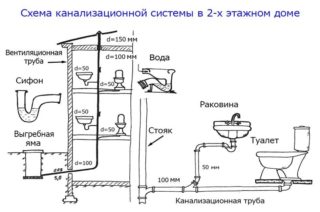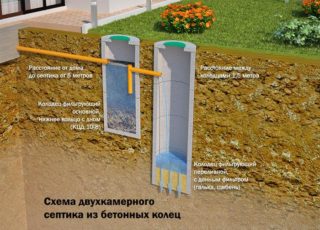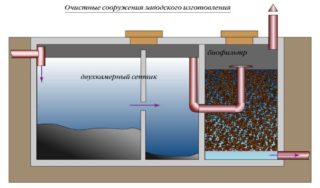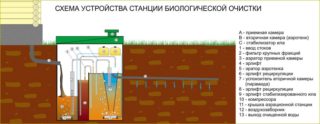An independent device of the sewer system in a country house is quite acceptable if you make a project wisely, select high-quality building materials and follow the technology. If the building is just being built, the drains are laid at the beginning of the construction along with other engineering communications. But it is also possible to install sewage mains in a residential building.
Design work
- Drawing up a large-scale construction plan.
- Determination of the place where the riser and the drain pipe will be located, their sizes.
- Calculation of how many home plumbing fixtures will be installed, and the choice of places for them.
- A schematic sketch of the location of pipe sections from devices to fitting elements (bends, tees) and a riser.
- The choice of the point of exit of the pipeline from the house.
- Calculation of the total length of all parts of the line, the number of fittings.
During the construction of a new house or during overhaul, they try to bring the drainage points as close to each other as possible. This method allows you to save on building materials. In two-storey or multi-storey cottages, sanitary facilities are placed one above the other.
The easiest way is to make a drainage system in frame buildings on screw piles or poles. If the foundation is strip, you will have to break through the floor slab to output the line.
The location of the external piping depends on which waste disposal method you choose. This can be a connection to the centralized sewerage system of a settlement or the installation of an autonomous purification device.
The choice of pipes for the main line of a private house
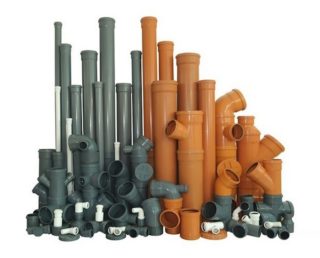
After completing the design work, you will need to purchase building materials:
- To get rid of drains coming from the toilet room, pipes with a diameter of at least 100-120 mm are used, and the total length of the line should be more than 1 m.
- Under the "gray" drains from the bathroom and kitchen, pipes made of polyvinyl chloride or polypropylene with a cross section of 50 mm are installed.
- All bends in the line are created using 45 degree elbows. As a result, the risk of clogging is practically zero.
The movement of sewage in the pipeline is gravity. All horizontal pipe sections with a cross section of 50 mm are laid with a slope of 3 cm per linear meter, and sections of the line with a diameter of 100 mm are 2 cm. Sealing gaskets are installed in the connecting nodes and treated with sealing silicone.
To create an external line, pipes with a cross section of 110 mm of red color are chosen. This makes them easier to find in the ground. They are made from tough polymers that can withstand soil pressure. When purchasing pipes and fittings, you need to check for the presence of an O-ring in the socket, as they are often lost.
Types of sewer systems
If it is not possible to connect to the central sewerage system, the installation of a local treatment plant will be required. In order for it to function without problems, the following criteria must be taken into account:
- site landscape;
- the type of soil, the depth of freezing and the level of occurrence of soil sources;
- the total number of plumbing fixtures;
- the number of residents of the house and guests;
- plant productivity.
It is necessary to take into account the purpose of the house: for permanent residence, or visiting on weekends and in the summer. Also, an important factor is the price of the treatment plant and the installation of the entire sewage system in a private house. Effective deep cleaning modules are expensive, and it is not always advisable to install them for a small one-story house. You can choose a simpler and cheaper option.
Cesspool
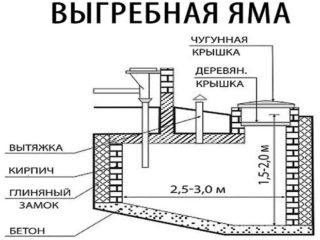
A pit without a bottom with walls made of bricks, reinforced concrete rings, concrete or old car wheels is suitable for small private houses and summer cottages, where the average volume of wastewater per day is less than a cubic meter. At the same time, the liquid that gets into the ground has time to undergo processing by microorganisms that live there and feed on organic matter.
With a volume of wastewater of more than a cubic meter, the liquid does not have time to be cleaned, which leads to soil contamination. This can lead to contamination of wells and other catchment points within a 50 m radius.
If subsurface springs are running close to the surface of the earth, a cesspool will not work. Its bottom should be at least one meter away from them.
The advantages of the installation include the fact that it is easy to build it with your own hands, without the involvement of special equipment. The cost of consumables is also low and can be reduced to zero by using old tires or unnecessary bricks.
The cesspool has many disadvantages:
- the need for systematic pumping of sewage;
- the occurrence of a sewer smell;
- silting of the walls;
- risk of soil contamination.
Violation of the installation process leads to freezing or clogging of the pipeline.
By adding special bacteria to the cesspool, you can slightly reduce the sewer odor, as well as speed up the cleaning process.
Sealed container
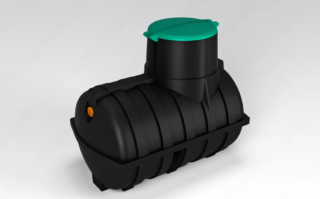
Metal and polymer tanks are sold in stores. The price starts from 1500 rubles. You can install a homemade structure from plastic pipes or concrete rings with a bottom. The main thing is that it is airtight.
Device advantages:
- does not allow impurities to get into the soil;
- suitable for a site with high groundwater;
- easy to install due to its low weight.
The sewage must be pumped out regularly. One call to the sewage equipment costs from 600 rubles. Waterproofing is necessary for a metal container, it can also rust.
A type of design is a single-chamber septic tank. It can be without a bottom with a filtration layer for discharging the purified liquid into the ground. It will be necessary to systematically add biological products to the container to improve the quality of effluent clarification.
Two-chamber overflow septic tank
Design advantages:
- high quality wastewater treatment;
- anti-corrosion qualities;
- service life - up to half a century.
You can install it yourself. The cost for self-installation is small: you can get by with the amount of 7-10 thousand rubles.
Over time, a critical volume of faeces accumulates in the first container. Cleansing requires a call to the sewer equipment approximately once every six months. Biological products added to the first well will help to reduce sewer "odors". The sand and crushed stone layer must be changed every five years.
Sewerage from two overflow wells for a country house is permissible if the location of subsoil waters, even in spring or after heavy rains, is at a depth of at least a meter from the filtering layer. Another requirement is that the soil must pass moisture well (sandstones and sandstones). If there is solid clay on the site, this option will not work.
Septic tank with biofilter
- The effluent is directed to a sump, where it is pre-purified, and then to a biofilter.
- The decomposition and oxidation of organic matter is carried out with the help of aerobic microorganisms.
- The clarified liquid goes into the drain.
The advantage of structures is a high degree of clarification, a decrease in the size of the area for additional treatment and energy independence. Impurities almost completely settle and split, leaving water, which is close to rainwater in purity. The disadvantages include the need to add biological products and periodic filter cleaning. Also, a septic tank, although rarely, will have to be pumped out.
The price of a biofilter starts at 5800 rubles, a complete set will cost at least 25000 rubles (depending on the manufacturer).
Deep cleaning station
The prices for high-tech septic tanks are high and depend on the manufacturer. A high-quality installation cannot cost less than 70,000 thousand.
Good options for autonomous stations are different models "Topas" and "Deka". The price of the former starts at 84,000 rubles, the cheapest model "BioDeca-3 C-600" is offered for 73,700 rubles. If the house is very large, it is advisable to install an integrated pumping station. Cost - from 380,000 rubles.
When conducting a sewage main in a private house, perform the calculations correctly, follow the installation process and do not save on building materials. Emergency situations during operation will be much more expensive.

